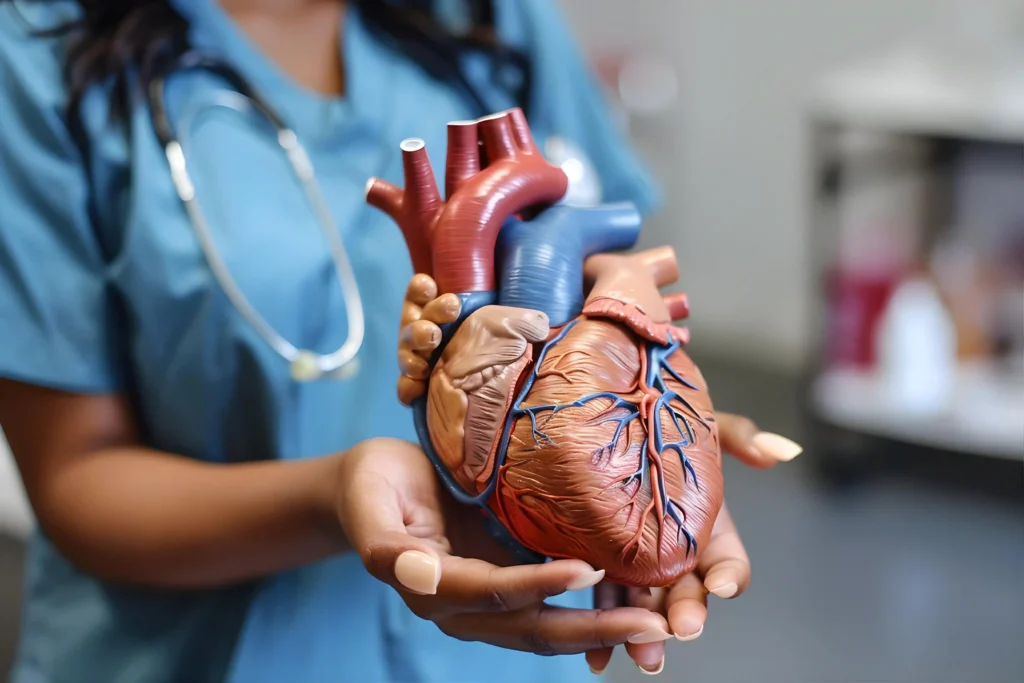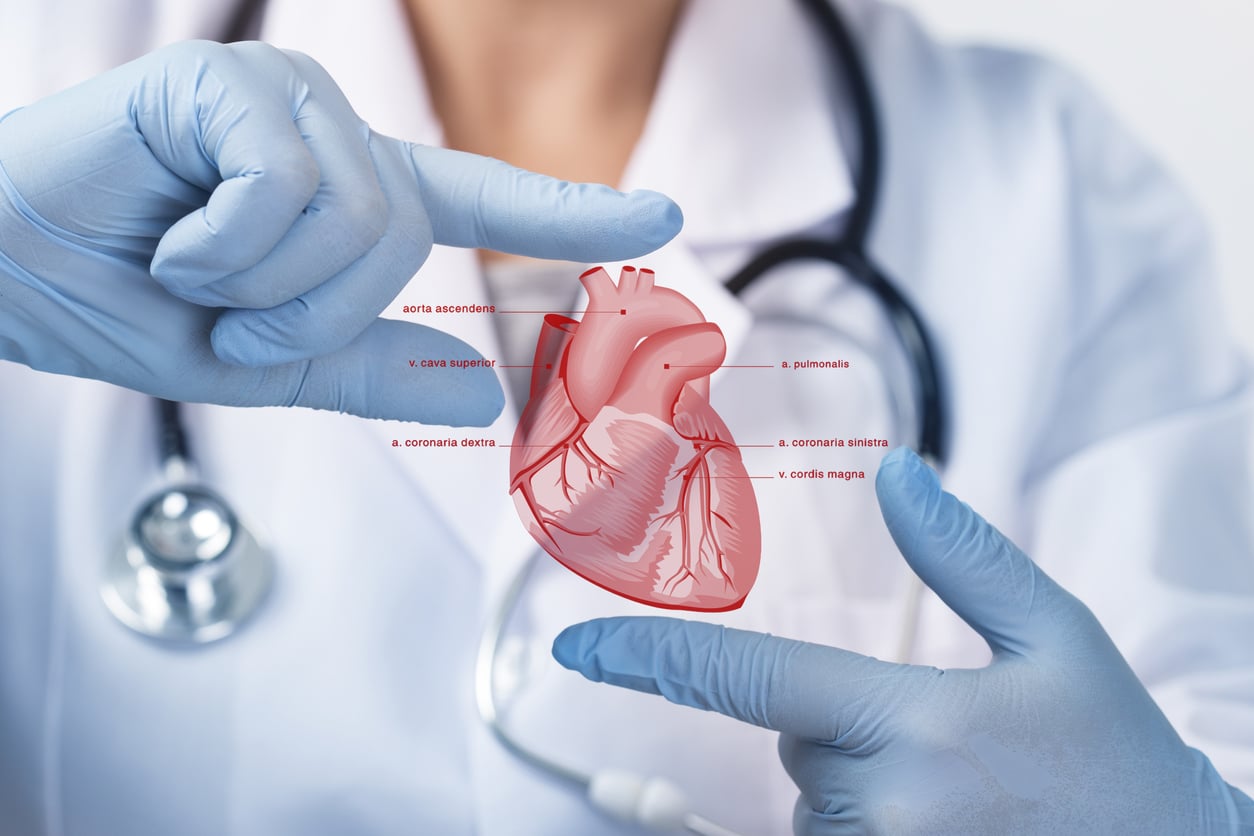Why heart-healthy eating matters: Cardiology care insights
Why heart-healthy eating matters: Cardiology care insights
Blog Article
Understanding the Importance of Cardiology in Modern Healthcare Solutions
Cardiology plays a vital function in modern-day medical care, specifically as heart condition proceeds to be the leading source of death worldwide. Developments in diagnostics and therapy have actually transformed individual care, allowing earlier interventions and improved outcomes. The shift in the direction of preventative cardiology encourages individuals to manage their health proactively. As modern technology proceeds to progress, the combination of innovative solutions might better redefine cardiology's effect on public health and wellness, prompting a more detailed exam of arising trends and their implications.
The Frequency of Heart Problem and Its Impact on Public Health
Heart disease continues to be the leading reason of death globally, its impact extends much past private patients to impact public wellness systems and economic climates. The high prevalence of heart condition puts a substantial stress on healthcare sources, necessitating boosted funding for recovery, therapy, and avoidance programs. Public wellness initiatives have to attend to risk aspects such as obesity, smoking cigarettes, and inactive way of livings, which contribute greatly to the increasing occurrence of heart conditions.Moreover, the economic worry associated with cardiovascular disease is tremendous, encompassing not only straight clinical prices but likewise indirect costs connected to shed productivity and premature death. Communities face difficulties in taking care of these costs, typically bring about differences in healthcare access and results. As the population ages and lifestyle-related dangers remain to intensify, the necessity for reliable cardiology treatments comes to be paramount. Addressing heart disease is not just a matter of individual health but additionally a critical public health top priority.
Breakthroughs in Heart Diagnostics and Imaging Techniques
Current developments in cardiac diagnostics and imaging techniques have actually changed the area of cardiology, improving the ability to spot and monitor cardiovascular disease. Methods such as heart MRI, CT angiography, and echocardiography have become increasingly innovative, supplying comprehensive photos of cardiac structures and features. These techniques permit the very early identification of conditions like coronary artery condition, cardiac arrest, and valvular disorders.Moreover, advancements in non-invasive diagnostics, such as wearable modern technology and remote tracking devices, have actually equipped people and doctor. These tools assist in real-time tracking of heart rhythms and various other important indicators, causing prompt treatments. Additionally, man-made intelligence is being incorporated into imaging analysis, boosting accuracy and performance in diagnosis.
Technologies in Treatment Choices for Heart Issues
Recent improvements in cardiology have brought about substantial technologies in treatment alternatives for heart conditions. These include innovative surgical methods that boost procedural results and arising medications that use brand-new avenues for treatment. As the area evolves, these advancements play an essential role in enhancing person care and outcomes.
Advanced Surgical Techniques
Advancements in medical techniques have transformed the landscape of cardiology, using brand-new wish for patients with heart conditions. Minimally invasive treatments, such as catheter-based treatments, have actually greatly reduced healing times and healthcare facility keeps. Techniques like robotic-assisted surgery enhance precision, enabling specialists to browse complicated physiological frameworks with higher precision. In addition, innovations in imaging modern technology facilitate real-time visualization throughout treatments, boosting end results. Transcatheter aortic shutoff substitute (TAVR) exhibits a development in treating aortic stenosis, enabling valve substitute without open-heart surgical procedure. In addition, hybrid techniques that integrate surgical and catheter-based techniques provide tailored remedies for numerous cardiac issues. These advanced medical methods not only boost person security however also increase treatment options, emphasizing the essential function of development in modern cardiology techniques.
Emerging Medications and Treatments
As the landscape of cardiology proceeds to develop, arising medicines and therapies play a pivotal function in enhancing therapy options for heart problems. Advancements such as novel anticoagulants and progressed lipid-lowering agents have actually transformed the administration of heart diseases, significantly lowering client morbidity and death. Furthermore, the growth of gene therapies and regenerative medicine supplies appealing avenues for dealing with problems formerly regarded irreversible. Clinical trials are consistently exposing the efficacy of these treatments, pressing the limits of typical treatments. The combination of electronic wellness technologies helps with individualized medication, permitting for tailored treatment plans based on genetic and way of life variables. Jointly, these advancements highlight the dynamic nature of cardiology, enhancing individual end results and redefining criteria of care in modern healthcare.
The Role of Preventive Cardiology in Client Care
Precautionary cardiology plays a crucial duty in person treatment by concentrating on the recognition of threat variables that add to heart problem. Through way of living alteration strategies and very early discovery strategies, medical care carriers can properly lower the occurrence of cardio occasions - Dr Garcia. This proactive strategy not just enhances individual results but also advertises lasting health and wellness
Danger Factor Recognition
While cardiovascular illness continue to be a leading reason of morbidity and mortality worldwide, reliable risk variable recognition acts as a cornerstone of preventive cardiology. Recognizing danger elements such as high blood pressure, diabetes mellitus, hyperlipidemia, and household background is vital for early treatment. Healthcare specialists use numerous screening approaches to examine these factors, permitting for tailored safety nets. In addition, understanding a person's lifestyle selections, such as smoking and physical lack of exercise, further notifies threat evaluations. This detailed assessment makes it possible for clinicians to establish personalized care strategies targeted at mitigating risks. By focusing on threat factor recognition, medical care systems can enhance client end results and reduce the general problem of heart diseases, eventually adding to boosted public health techniques and source appropriation.
Lifestyle Adjustment Methods
A plethora of studies highlights the vital function of way of living alteration strategies in reducing cardiovascular illness danger. These methods incorporate nutritional adjustments, increased exercise, smoking cessation, and weight management. By embracing my link a heart-healthy diet plan abundant in fruits, veggies, whole grains, and lean proteins, individuals can reduce cholesterol levels and blood pressure. Regular exercise strengthens the heart and improves overall cardio wellness. In addition, giving up smoking cigarettes substantially lowers the threat of heart condition and improves healing rates for those with status quo. Weight monitoring better adds to cardio wellness by alleviating other risk factors such as diabetes and high blood pressure. Carrying out these way of living changes not only advertises private well-being but additionally acts as a cornerstone of preventative cardiology in individual care.
Early Detection Strategies
Way of living adjustments substantially add to lowering heart disease threats, however they are most efficient when paired with very early detection strategies. Precautionary cardiology emphasizes the value of determining potential heart problems before they escalate find here right into serious problems. Techniques such as high blood pressure tracking, cholesterol testing, and advanced imaging modern technologies like echocardiograms play vital roles in reviewing cardiovascular wellness. Biomarkers and genetic screening also improve the accuracy of early discovery, allowing for tailored preventative techniques. Normal cardiac danger evaluations equip doctor to interfere proactively, potentially stopping heart attacks and strokes (Cardiology). By integrating these early discovery approaches into routine care, people can take advantage of timely way of life treatments and targeted treatments, ultimately enhancing and improving results top quality of life
Integrating Technology Into Cardiology Practices
As developments in technology remain to improve numerous fields, the combination of cutting-edge devices and systems right into cardiology techniques has actually come to be important for improving individual treatment and end results. Telemedicine systems allow cardiologists to check patients remotely, improving access to care while reducing the burden on healthcare facilities. Wearable devices, such as smartwatches, enable continuous heart rate monitoring, alerting both patients and physicians to possible concerns in real-time. In addition, man-made knowledge (AI) is being used to evaluate large amounts of heart data, assisting in very early diagnosis and individualized treatment plans. Advanced imaging strategies, including 3D echocardiography, improve visualization of heart structures, resulting in more precise treatments. Digital health and wellness records (EHRs) streamline patient details monitoring, making sure that cardiologists have immediate access to crucial information. Together, these technological improvements are transforming cardiology, advertising aggressive administration and improved wellness results for patients with cardio conditions.
The Relevance of Individual Education And Learning and Interaction
Person education and involvement play a critical function in the management of cardiovascular wellness. By equipping individuals with knowledge about their problems, therapy options, and way of life changes, doctor empower individuals to take an active duty in their treatment. This proactive technique can bring about improved adherence to prescribed medicines, nutritional adjustments, and workout regimens, eventually minimizing the threat of complications.Engagement additionally fosters a strong patient-provider connection, motivating open interaction and trust fund. When people feel informed and involved, they are much more likely to voice worries and ask inquiries, which can bring about far better clinical outcomes. Additionally, educational resources, such as workshops or digital systems, can boost understanding and advertise self-management strategies. Overall, focusing on patient education and learning and involvement is important for improving cardiovascular health, improving quality of life, and reducing healthcare costs connected with heart diseases.
Future Patterns in Cardiology and Their Prospective Impact

Often Asked Questions
What Lifestyle Adjustments Can Minimize Heart Problem Risk?
The existing concern addresses lifestyle adjustments that can considerably decrease heart problem threat. Cardiologist near me. Embracing a balanced diet regimen, taking part in normal exercise, maintaining a healthy and balanced weight, handling stress, and staying clear of tobacco can especially enhance cardio health and wellness
How Can I Acknowledge Early Indications of Heart Problems?
Acknowledging early indications of heart problems includes surveillance signs such as upper body pain, lack of breath, fatigue, and uneven heartbeat. Timely recognition of these indicators can motivate necessary clinical evaluation and intervention for far better outcomes.
What Are the Distinctions In Between Cardiologists and Cardiac Surgeons?
The differences in between cardiologists and cardiac cosmetic surgeons hinge on their roles; cardiologists mostly handle and detect heart disease with non-invasive approaches, while heart cosmetic surgeons do procedures to fix architectural heart concerns. Each plays a vital, unique function.

Just how Usually Should I Obtain My Heart Health And Wellness Checked?
The frequency of heart checkup differs based on specific danger elements. Generally, grownups ought to undergo analyses every one to 2 years, while those with status quo might require even more regular assessments as suggested by health care professionals.
What Duty Does Genetics Play in Cardiovascular Disease Danger?
Genes substantially influences heart condition danger, with domestic patterns suggesting acquired conditions. Details genes can incline individuals to high blood pressure, cholesterol issues, and various other cardiovascular issues, highlighting the importance of genetic testing in assessing heart wellness. Heart disease continues to be the leading cause of death around the world, its impact expands far beyond specific patients to impact public wellness systems and economies. Public health and wellness campaigns should attend to threat elements such as weight problems, smoking, and sedentary way of lives, which add greatly to the climbing incidence of heart conditions.Moreover, the economic burden connected with heart disease is immense, including not only straight clinical costs but likewise indirect expenditures connected to shed productivity and premature mortality. why not check here Precautionary cardiology plays a crucial role in client care by concentrating on the recognition of threat variables that add to heart disease. Artificial intelligence (AI) and device knowing are improving diagnostics and individual surveillance, making it possible for very early discovery of heart conditions. The distinctions in between cardiologists and heart doctors exist in their duties; cardiologists mostly detect and take care of heart problems with non-invasive techniques, while cardiac cosmetic surgeons carry out surgical procedures to deal with architectural heart concerns.
Report this page